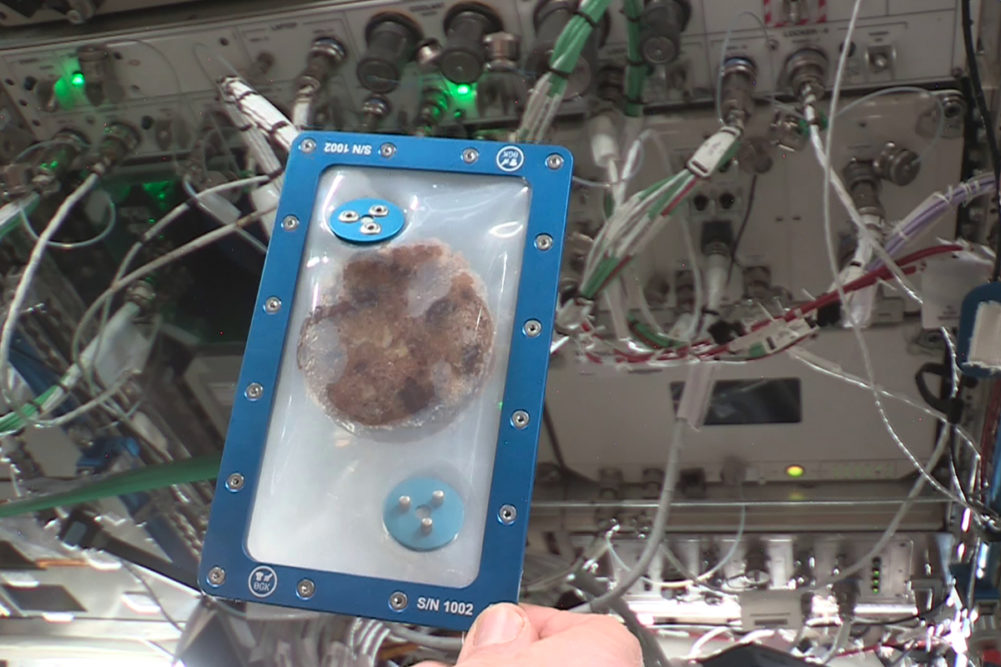MCLEAN, VA. — Humans now have a recipe for chocolate chip cookies in outer space: Bake at 325 degrees Fahrenheit for 130 minutes. While baking in space for the first time ever, astronauts aboard the International Space Station found this tactic produced a desirable chocolate chip cookie.
Learning how to bake cookies in space should help in making space travel more hospitable.
The astronauts baked DoubleTree by Hilton chocolate chip cookies. The experiment was made possible through a partnership involving DoubleTree by Hilton; Zero G Kitchen, proprietors of the first space oven; and Nanoracks, a provider of commercial access to space. Following a Nov. 2, 2019, launch from NASA’s Wallops Flight Facility in Virginia, the baking took place over several days.
The average DoubleTree chocolate chip cookie bakes in a convection oven for 16 to 18 minutes at 300 degrees Fahrenheit. On the International Space Station, the first cookie baked at 300 degrees for 25 minutes and was under-baked. The experiment found the fourth and fifth cookies, baked at 300 degrees for 120 minutes and at 325 degrees for 130 minutes, respectively, were the most successful.
Before the experiment, there was speculation the space cookies would be more spherical due to the lack of gravity in space. The experiment revealed the initial shape and consistency of the DoubleTree chocolate chip cookies appeared the same in space as on Earth.
Luca Parmitano, commander of the ISS and a member of the European Space Agency, baked the cookies. Fellow crew members, including NASA astronaut Christina Koch, checked on their progress. Three of the cookies returned to Earth on Jan. 7 on the SpaceX Dragon spacecraft. Food science professionals planned to further test the cookies.
“Perfecting the baking process for our DoubleTree cookies took time, even on earth,” said Shawn McAteer, senior vice-president and global head for McLean-based DoubleTree by Hilton, a portfolio of 580 hotels across 46 countries. “So we were excited to learn that our cookies appear to look and smell the same on the I.S.S. as they do in our hotels. The innovation displayed throughout this experiment and emphasis on making long-duration space travel more hospitable underscores our ongoing commitment to ensuring guests always have a comfortable stay wherever they may travel.”





